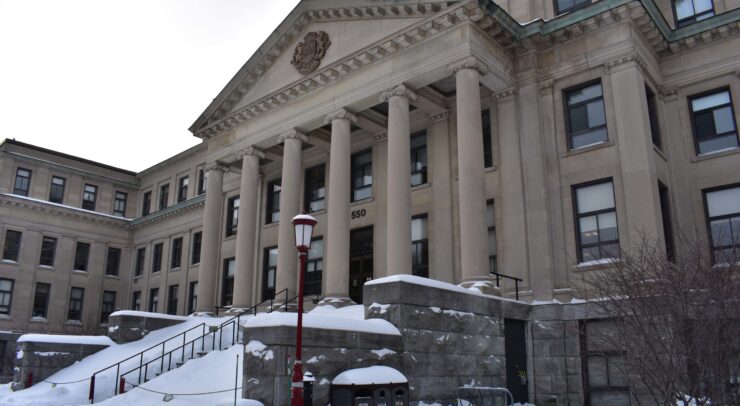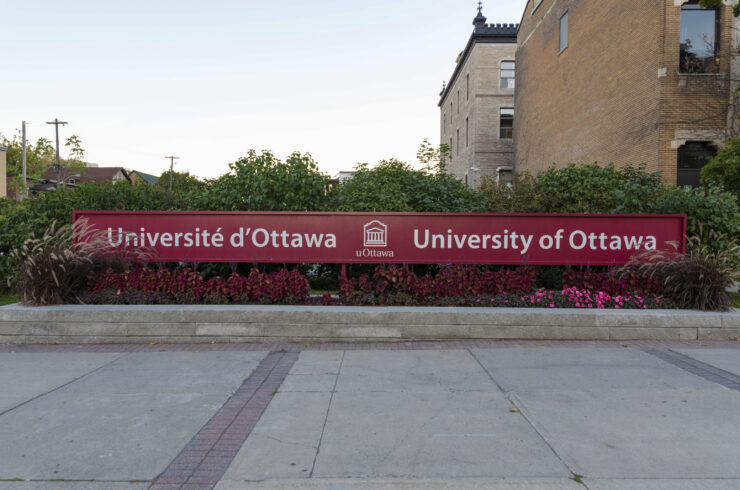Calls for more involvement in process, widespread training, scrapping of carding policy
Student leaders are welcoming measures implemented by the University of Ottawa last week to combat racism and discrimination after a Black student was carded and handcuffed by campus security this summer, but point to gaps and shortfalls in the university’s response.
The measures follow widespread backlash after Jamal Boyce, a conflict studies and human rights student at the U of O and vice-president (academic and university affairs) of the program’s student association, was detained by campus security on June 12 for over two hours under the Trespass to Property Act for not having his student identification card. The incident led to allegations of racism, racial profiling and harassment and prompted others to share their stories.
The university responded on Sept. 4 with an updated policy directing carding on campus, unconscious bias training for security officers, an updated complaint mechanism and collaboration with an advisory committee throughout the process.
But for criminology and law student Dilaye Desta, the Black Student Leaders Association’s (BSLA) director of community engagement, the measures introduced by the university come years after students began calling for change and only scratch the “surface level.”
“We’ve had many years of hearing different experiences of other Black students who have been carded like Jamal or who have been unfairly treated, whether it’s by campus security or police in Ottawa,” she said. “It was disheartening to know that things haven’t changed … it seems as though we weren’t heard.”
Desta says unconscious bias training for campus security officers is a long time coming.
“This shouldn’t be a new policy implemented in the year 2019,” she says. “This should have been here decades ago. This shouldn’t be a correctional issue.”
Jason Seguya, the student life commissioner of the University of Ottawa Students’ Union (UOSU), adds the training shouldn’t be limited to just Protection Services, but a requirement for anyone employed by the university.
Seguya, along with Boyce and other groups on campus, has also called for carding to be banned on campus. The updated policy lists specific instances when identification may be requested. U of O president Jacques Frémont said in an accompanying news release that “identification must never be requested randomly and arbitrarily and should not be Protection Services’ routine practice.”

“(The university) did mention fair points on when (carding) can be beneficial in some cases, but in situations such as Jamal’s it’s a dehumanizing practice,” Seguya says.
Seguya calls the updated complaint mechanism, which prompts contact with the director of Protection Services and the option of reaching out to the U of O’s Human Rights Office, “absolutely powerful.” The promotion of the complaints mechanism is his concern.
“That level of promotion needs to go beyond just using the internet and social media but also engaging in other ways, from tabling to in-person promotion … and making sure this information is accessible.”
Both Seguya and Desta say they would have liked to see more involvement of student voices in the process of developing these measures.
Seguya says he and other members of student governments tried to attend some of the meetings of the President’s Committee for a Discrimination-Free Campus, made up of 12 interim members, but were “denied access to those spaces.” Seguya also tried to obtain minutes from the meetings but says he was told they weren’t available.
“It became very, very difficult to find out what steps were being taken or what measures were being made on behalf of the whole community,” Seguya says, also expressing frustration over not knowing who was on the committee until after the measures were released.
Desta says she wishes groups like the BSLA and more students of colour were included in the process of developing these measures.
“That’s a huge, huge gap,” Desta says.
Desta and Seguya both say representation in Protection Services and in the leadership of the university would go a long way in making students of colour feel more welcome on campus.
“When someone actually understands your experience from actually experiencing it, it really makes a big difference,” Seguya says.
A report by former vice-chair of the Human Rights Tribunal of Ontario Esi Codjoe into the carding and handcuffing of Boyce is yet to be released. It was announced on June 18 and will be made public within the limits of the law.
Codjoe is tasked with determining whether Policy 33 — which governs carding on campus — and the Trespass to Property Act were properly applied in Boyce’s case and in accordance with the law and human rights.
Codjoe will then issue recommendations to “ensure that the campus fully respects the human rights of all members of the community and visitors to campus.”
On the measures, Frémont said in an email to students on Sept. 4 he “will have more to say about this in the coming weeks.”






